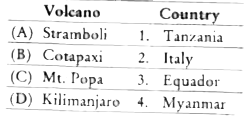Which of the following compound possesses Lewis acid character?
(1) (2) (3)
Select the correct answer using the codes given below
1 alone
1,2&3
2 & 3
1&3
The correct Answer is:B
To determine which of the given compounds possesses Lewis acid character, we need to analyze each compound based on the definition of a Lewis acid. A Lewis acid is defined as a species that can accept an electron pair.
1. Analyze BF3 (Boron Trifluoride):
- Boron trifluoride has the formula BF3.
- Boron has only three valence electrons and forms three bonds with fluorine atoms, resulting in a total of six electrons in its valence shell.
- Since boron does not have a complete octet (which requires eight electrons), it is electron deficient.
- Additionally, boron has an empty p-orbital which allows it to accept an electron pair.
- Conclusion: BF3 acts as a Lewis acid.
2. Analyze SiF4 (Silicon Tetrafluoride):
- Silicon tetrafluoride has the formula SiF4.
- Silicon has four valence electrons and forms four bonds with fluorine atoms, resulting in a complete octet (eight electrons).
- Although SiF4 has a complete octet, the highly electronegative fluorine atoms pull electron density towards themselves, creating a partial positive charge on silicon.
- However, SiF4 does not have an empty orbital available for accepting an electron pair.
- Conclusion: SiF4 does not act as a Lewis acid.
3. Analyze PF5 (Phosphorus Pentafluoride):
- Phosphorus pentafluoride has the formula PF5.
- Phosphorus has five valence electrons and forms five bonds with fluorine atoms.
- This results in a total of ten electrons around phosphorus, which exceeds the octet rule, indicating that phosphorus can utilize its empty d-orbitals.
- The presence of highly electronegative fluorine atoms makes phosphorus electron deficient, allowing it to accept an electron pair.
- Conclusion: PF5 acts as a Lewis acid.
Final Answer:
Based on the analysis:
- BF3 and PF5 exhibit Lewis acid character.
- SiF4 does not exhibit Lewis acid character.
Thus, the correct answer is (1) and (3), or simply Option 2 if the options provided include all three.
- Boron trifluoride has the formula BF3.
- Boron has only three valence electrons and forms three bonds with fluorine atoms, resulting in a total of six electrons in its valence shell.
- Since boron does not have a complete octet (which requires eight electrons), it is electron deficient.
- Additionally, boron has an empty p-orbital which allows it to accept an electron pair.
- Conclusion: BF3 acts as a Lewis acid.
- Silicon tetrafluoride has the formula SiF4.
- Silicon has four valence electrons and forms four bonds with fluorine atoms, resulting in a complete octet (eight electrons).
- Although SiF4 has a complete octet, the highly electronegative fluorine atoms pull electron density towards themselves, creating a partial positive charge on silicon.
- However, SiF4 does not have an empty orbital available for accepting an electron pair.
- Conclusion: SiF4 does not act as a Lewis acid.
- Phosphorus pentafluoride has the formula PF5.
- Phosphorus has five valence electrons and forms five bonds with fluorine atoms.
- This results in a total of ten electrons around phosphorus, which exceeds the octet rule, indicating that phosphorus can utilize its empty d-orbitals.
- The presence of highly electronegative fluorine atoms makes phosphorus electron deficient, allowing it to accept an electron pair.
- Conclusion: PF5 acts as a Lewis acid.
Based on the analysis:
- BF3 and PF5 exhibit Lewis acid character.
- SiF4 does not exhibit Lewis acid character.
Topper's Solved these Questions
- CONCEPT OF ACIDS AND BASESBook:FIITJEEChapter:CONCEPT OF ACIDS AND BASESExercise:ASSIGNEMENT PROBLEMS (OBJECTIVE)Level-I REASONING TYPE QUESTONS
Explore 2 Videos
- CONCEPT OF ACIDS AND BASESBook:FIITJEEChapter:CONCEPT OF ACIDS AND BASESExercise:ASSIGNEMENT PROBLEMS (OBJECTIVE)Level-II
Explore 15 Videos
- CONCEPT OF ACIDS AND BASESBook:FIITJEEChapter:CONCEPT OF ACIDS AND BASESExercise:ASSIGNMENT PROBLEMS (SUBJECTIVE)Level-II
Explore 9 Videos
- CHEMISTRY IN EVERY DAY LIFE Book:FIITJEEChapter:CHEMISTRY IN EVERY DAY LIFE Exercise:ASSIGNMENT PROBLEMS (OBJECTIVE) Level - II (Numerical Based Questions)
Explore 5 Videos
- ELECTROCHEMISTRYBook:FIITJEEChapter:ELECTROCHEMISTRYExercise:Matcing Type Single Correct Questions
Explore 3 Videos
Similar Questions
Which of the following lakes is/are situated in Ladakh?
1. Tso Kar
2. Pangong Tso
3. Tsomgo
4. Tso Moriri
Select the correct answer using the code given below.
View SolutionWhich of the folowing have undistorted octahedral structures:(1) SF6(2)PF−6(3)SIF2−6(4)XeF6
Select the correct answer using the codes given below
View Solution
Knowledge Check
Which of the following compounds possess Lewis acid character ?
(1) BF3 BF3 (2) SiF4 (3) PF5A1 aloneB1,2, and 30C2 and 3D1 and 3Which of the following cannot undergo Lewis acid-base reaction with BF3?
AF−BNH3CAlCl3D(C2H5)2OMatch the following and select the correct answer by using codes given below.
 AABCD1234BABCD2134CABCD2314DABCD2341
AABCD1234BABCD2134CABCD2314DABCD2341
Let A and B be two matrices such that AB = A and BA = B. Which of the following statements are correct ?
1. A2=A
2. B2=B
3. (AB)2=AB
Select the correct answer using the code given below :
View SolutionWhich of the following diseases are waterborne?
1. Typhoid 2. Hepatitis B
3. Tuberculosis 4. Hepatitis A
Select the correct answer using the code given below
View SolutionWhich of the following countries suffer from the acid rains?
1. Canada
2. France
3. Norway
4. Germany
Select the correct answers from the codes given below:
View SolutionWhat is the correct sequence of the following zonal pressure belts?
1. Subpolar 2. Equatorial low 3. Polar high 4. Subtropical high
Select the correct answer using the codes given below: Codes :
View SolutionA=[3104]andB=[1102], then which of the following is/are correct ?
I. AB is defined
II. BA is defined
III. AB = BA
Select the correct answer using the codes given below.
View Solution

